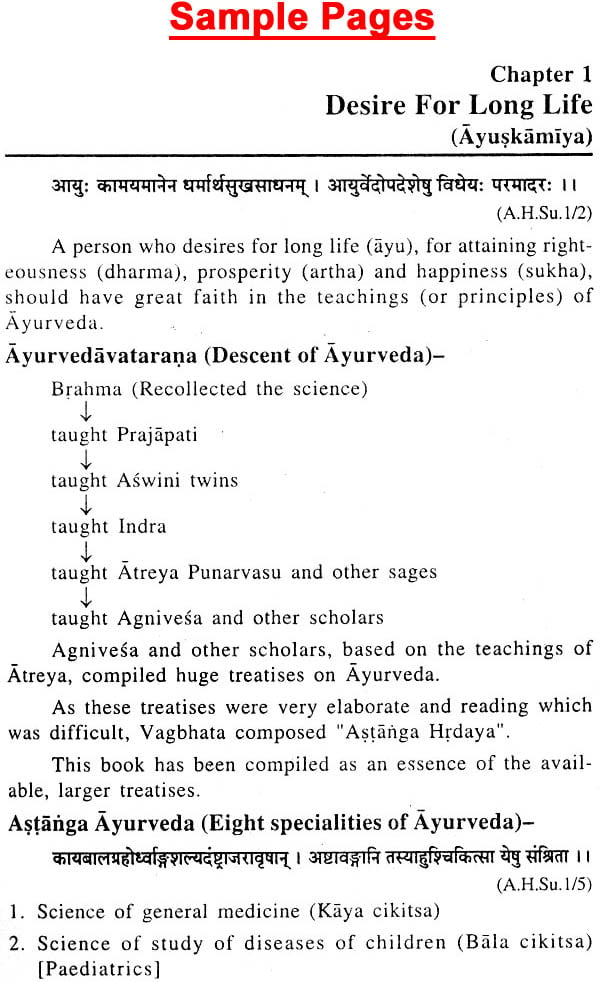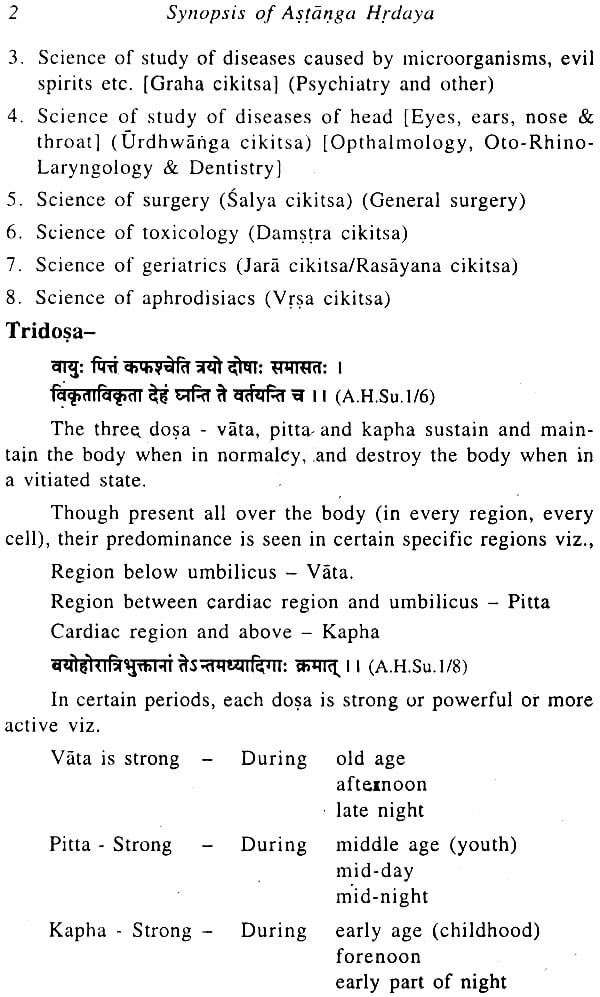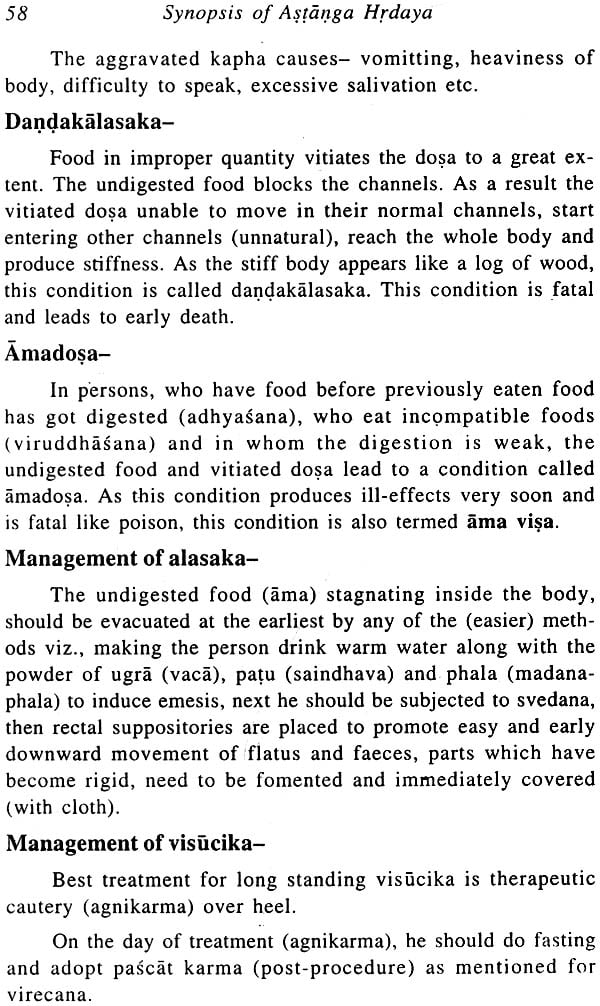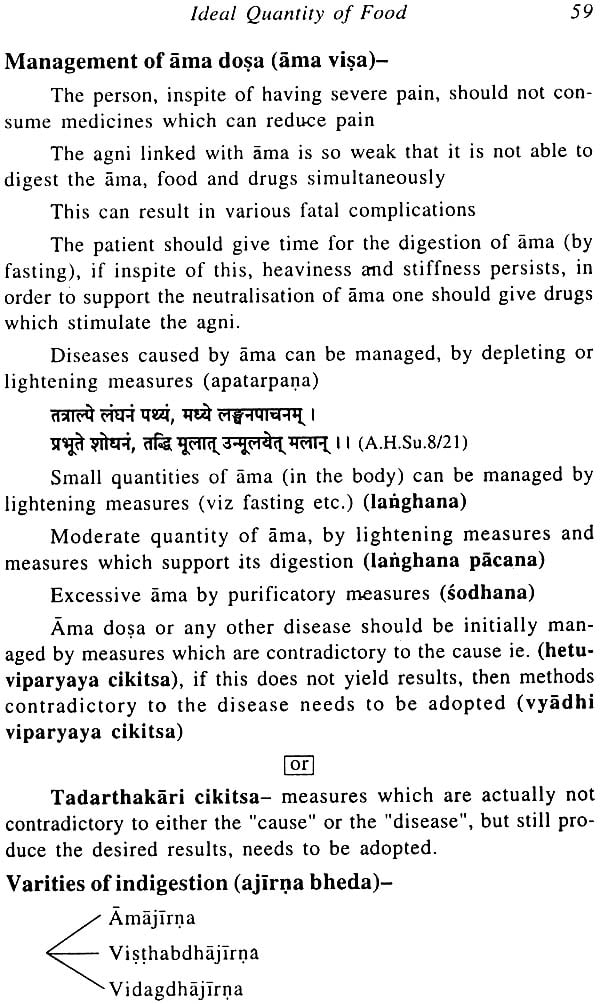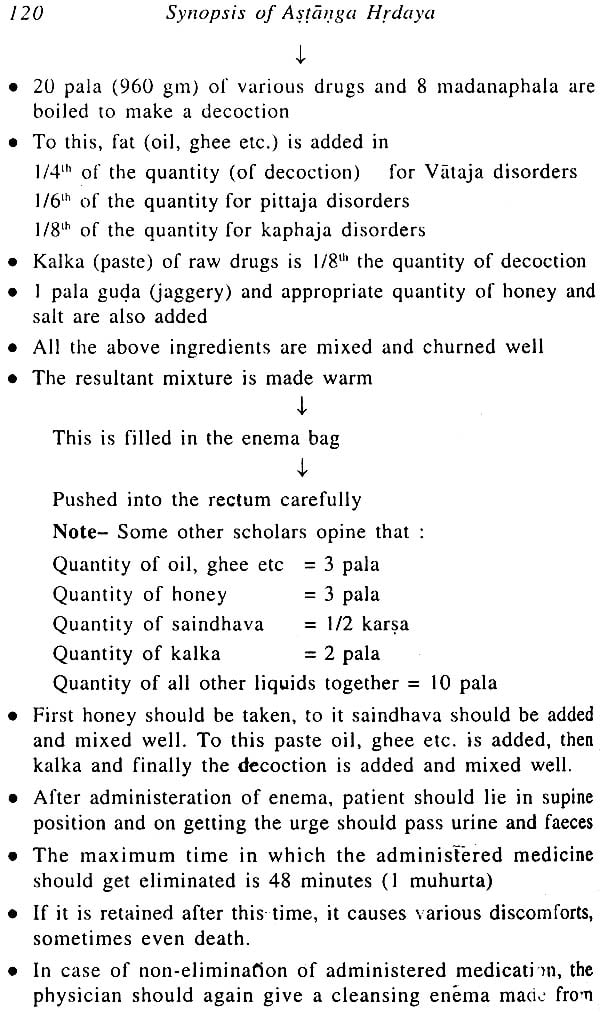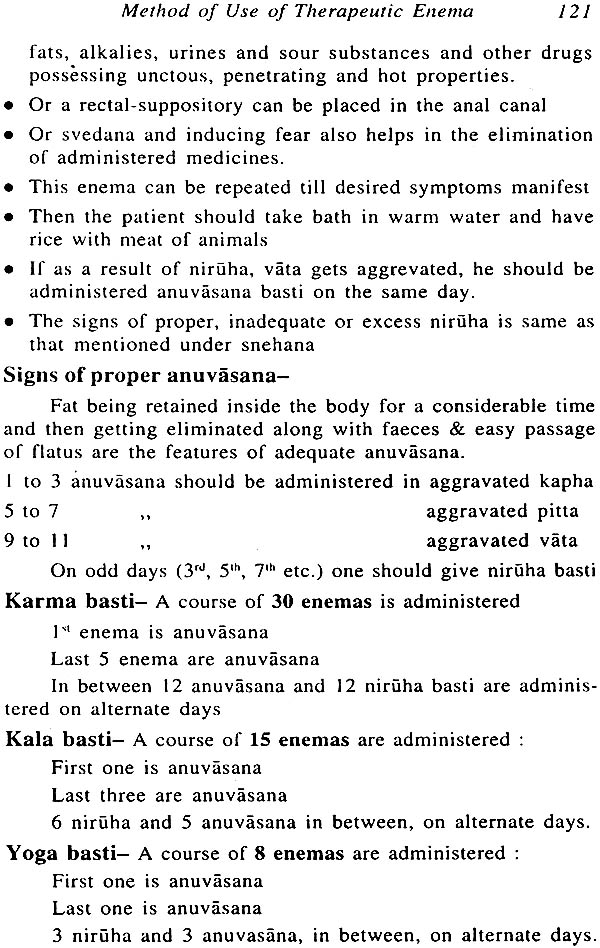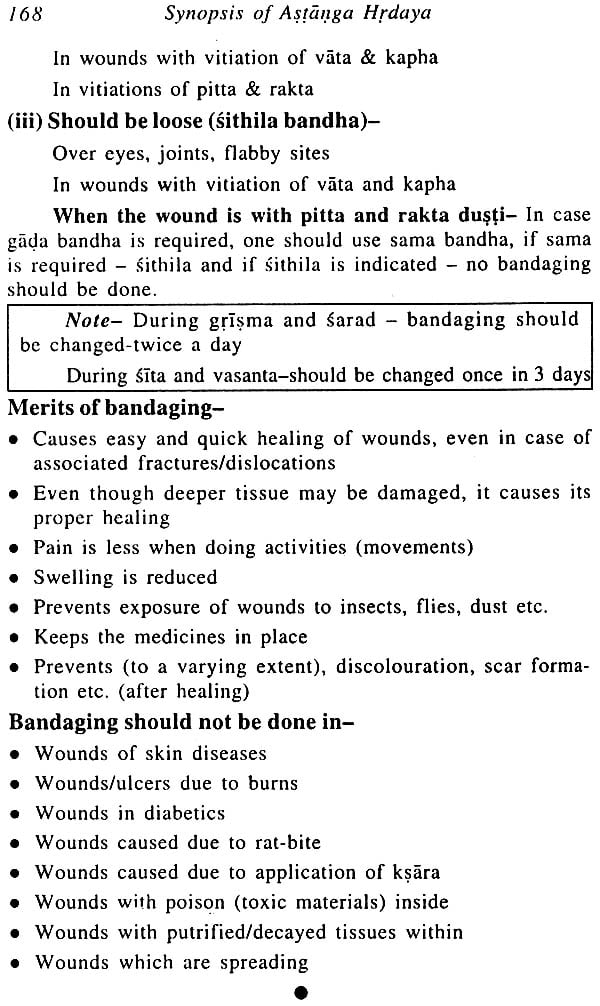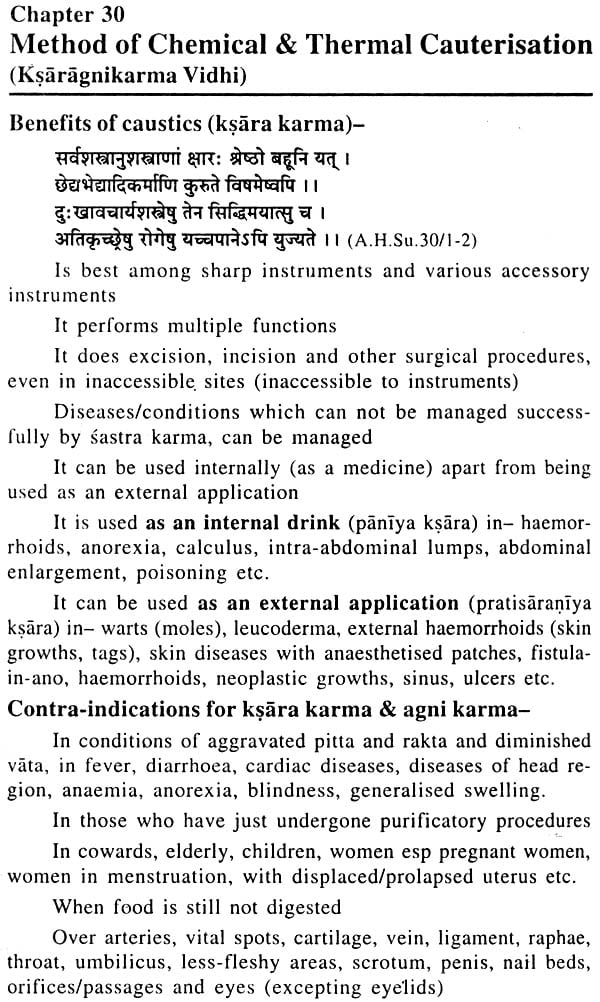
Synopsis of Astanga Hrdaya (Sutra Sthana)
Book Specification
| Item Code: | NAN286 |
| Author: | Dr. Rajneesh V. Giri |
| Publisher: | CHAUKHAMBHA ORIENTALIA, Varanasi |
| Language: | English |
| Edition: | 2014 |
| ISBN: | 9788176370950 |
| Pages: | 182 |
| Cover: | Paperback |
| Other Details | 8.5 inch X 5.5 inch |
| Weight | 170 gm |
Book Description
With the introduction of Astanga Hrdaya as a text in the syllabus-of BAMS, it was necessary to have a synopsis of this book. This book intends to present the vast ocean of knowledge of the original text, in a simple, understandable format. As the intended people of use are those who have just entered the field of Ayurveda, the information has been presented in simple English with important notes and with not much confusing details. Hope this endeavour is attractive to the 1st year students of BAMS and others in this field as well.
Dr. Rajneesh V. Giri after completing his basic studies is various Kendriya Vidyalaya, completed his BAMS and MS from Govt. Ayurveda Medial College, Bangalore. He completed his Ph.D. from the prestigious Banaras Hindu University, Varanasi. Presently he is working as Asst. professor and head of the Department of Shalyatantra in Sushrutha Ayurvedic Medical College, Bangalore.
To his credit, he has authored immensely popular books "Synopsis of Susruta Samhita", Synopsis of Caraka Samhita" and "Text Book of Salyatantra", which have helped BAMS students a lot.
He has been a popular speaker in various National and International Seminars and has been Guest Speaker at various workshop of "National Campaign on Kshara Sootra" organised by Dept. of AYUSH, Govt. of India, New Delhi.
Making the science of Ayurveda, easy to understand, has been my endeavour both as a teaching faculty as well as an author. My earlier work" Synopsis of Susruta Samhita", "Synopsis of Caraka Samhita" and "Text book of Salyatantra" have all been whole-heartedly accepted by the students of this science.
I present this work "Synopsis of Astanga Hrdaya" for the new entrants in Ayurveda. Students entering into Ayurveda from different streams find it difficult to comprehend the principles and vast knowledge of this science. This sometimes acts as a damper to their interest in the science.
So it has been my aim to present the facts and principles put forth by vagbhata in a very simple and easy language. I have added only few important sloka and have highlighted important aspects as "note" in many places. To make the appeal of the book more widespread, I have used English words for various Ayurvedic terminologies repeatedly.
Thus I hope students going through this book, will understand my efforts and I feel if this book is able to give a good knowledge of basics of Ayurveda to them, my efforts will have achieved their results. This book is just an extract and hence if they have to gain greater knowledge, they have to read the original text, with its commentaries and further enlighten themselves.
CONTENTS
| Sutra Sthana [Section of Basic Principles of Ayurveda] | ||
| Chapter 1 | Desire for long life (Ayuskamiya adhyaya) | 1-11 |
| Chapter 2 | Daily regimen (Dinacarya adhyaya) | 12-15 |
| Chapter 3 | Seasonal regimen (Rtucarya adhyaya) | 16-21 |
| Chapter 4 | Prevention of manifestation of diseases (Roganutpadaniya adhyaya) | 22-26 |
| Chapter 5 | Knowledge of various liquids (Dravadravya vijnaniya adhyaya) | 27-36 |
| Chapter 6 | Properties of various foods (Annasvarupa vijnaniya adhyaya) | 37-50 |
| Chapter 7 | Protection of foods (Annaraksadhyaya) | 51-56 |
| Chapter 8 | Ideal quantity of foods (Matrasitiya adhyaya) | 57-62 |
| Chapter 9 | Substance and their qualities (Dravyadi vijnaniya adhyaya) | 63-65 |
| Chapter 10 | Classification of tastes (Rasabhediya adhyaya) | 66-68 |
| Chapter 11 | Knowledge of qualities of dosa etc. (Dosadi vijnaniya adhyaya) | 69-76 |
| Chapter 12 | Classification of dosa (Dosabhediya adhyaya) | 77-85 |
| Chapter 13 | Treatment of vitiated dosa (Dosopakramaniya adhyaya) | 86-90 |
| Chapter 14 | Two major treatments (Dvividhopakramaniya adhyaya) | 91-94 |
| Chapter 15 | Groups of drugs for purificatory procedures etc. (Sodhanadigana sangraha adhyaya) | 95-99 |
| Chapter 16 | Method of oleation (Snehavidhi adhyaya) | 100-104 |
| Chapter 17 | Method of sudation (Svedanavidhi adhyaya) | 105-108 |
| Chapter 18 | Method of emesis & purgation (Varnana-virecana vidhi adhyaya) | 109-114 |
| Chapter 19 | Method of use of therapeutic enema (Basti vidhi adhyaya) | 115-124 |
| Chapter 20 | Method of use of medicines through nose (Nasya vidhi adhyaya) | 125-129 |
| Chapter 21 | Method of inhalation of medicated smoke (Dhumapana vidhi adhyaya) | 130-132 |
| Chapter 22 | Method of gargling medicines etc. (Gandusadi vidhi adhyaya) | 133-136 |
| Chapter 23 | Method of use of eye drops, collyrium etc. (Ascyotana, anjana vidhi adhyaya) | 137-139 |
| Chapter 24 | Method of various special treatments for eyes etc. (Tarpana-putapaka vidhi adhyaya) | 140-143 |
| Chapter 25 | Method of use of blunt instruments and appliances (Yantra vidhi adhyaya) | 144-148 |
| Chapter 26 | Method of use of sharp instruments (Sastra vidhi adhyaya) | 149-154 |
| Chapter 27 | Method of letting blood from veins (Siravyadha vidhi adhyaya) | 155-158 |
| Chapter 28 | Method of extraction of foreign bodies (Salya aharana vidhi adhyaya) | 159-162 |
| Chapter 29 | Method of various surgeries (Sastrakarrna vidhi adhyaya) | 163-168 |
| Chapter 30 | Method of chemical and thermal cauterisation (Ksara-agnikarma vidhi adhyaya) | 169-174 |
